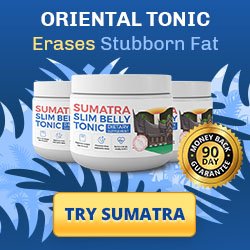Rewrite the
Whether they’re trying to initiate them or keep up with them, food manufacturers tend to roll with the latest trends. Remember the no-fat fad? It was great until consumers realized that some fat is necessary for good health and that manufacturers were packing their products full of added sugar and salt to make them palatable.
And now, with the rise in the number of people taking GLP-1s, some food manufacturers are grabbing hold of the drug companies’ coattails, hoping to appeal to consumers taking the weight loss medications.
Originally designed for people with diabetes, GLP-1 medications like Ozempic or Wegovy help stabilize blood sugar and reduce appetite. They also tend to quiet “food noise,” or constant thoughts about food. Once people realized the weight loss benefit of these drugs, they quickly became in high demand.
Now, large food companies like Nestlé and Conagra Brands are jumping on the GLP-1 bandwagon, too. For example, Conagra released a press release on December 12, 2024, announcing that some of their Healthy Choice meals will bear a GLP-1-friendly badge beginning in January 2025.
Nestlé released a similar announcement on September 18, 2024, revealing an entirely new line of GLP-1-friendly foods under their new GLP-1 brand called Vital Pursuit. Nestlé also owns Boost, the pre-mixed nutritional drinks, which are now being marketed as “GLP-1 Nutrition.”
It’s no surprise that food manufacturers are jumping on the GLP-1 bandwagon, claiming that their products are GLP-1 friendly. After all, it is in their financial interest to meet the needs of consumers and stay in business.
What Does GLP-1-Friendly Mean?
According to the press releases put out by both companies, GLP-1-friendly foods are those that are high in fiber and protein. There are good reasons they’re focusing on these two nutrients.
First, when you lose weight, especially if the weight loss is rapid, as is often the case with GLP-1s, you also lose muscle mass. This is especially true if you’re not strength training or eating enough protein while losing weight.
Because appetite is reduced on these drugs, it might be difficult to get enough of all the nutrients you need for good health and muscle maintenance, including protein. But you don’t want to lose muscle mass while losing weight. It isn’t just that you could become weaker physically—muscle is metabolically active tissue that uses calories, and you want to keep as much of it as possible.
The other problem with losing so much muscle mass is that it can throw off your body composition, or how much fat and lean tissue you have. So while the goal of weight loss is really fat loss, if you’re not eating enough protein and engaging in strength training, you will lose weight, but not in the way that you want. And ultimately, you could end up with a higher ratio of body fat to muscle, which is undesirable from a whole health perspective.
The other caveat with GLP-1s is that they slow gastric emptying. This means that things tend to move more slowly through your gut, reducing appetite and slowing the release of glucose into the bloodstream. This is great for blood sugar management. But it may also cause constipation—although some people experience diarrhea while on GLP-1s, too. Either way, it can cause intestinal upset and disrupt your day-to-day life. One possible solution is to eat more fiber.
Fiber helps bulk stool up so that it can move more smoothly through your intestines and out of your body (bye-bye, constipation!). Soluble fiber, found in foods like whole grains, legumes, fruits, vegetables and seeds, attracts water while moving through the gut. So for those with diarrhea, soluble fiber can help make stools more dense.
Should You Buy Foods Marketed as GLP-1 Friendly?
Basically, GLP-1 friendly simply means that the foods are high in protein and fiber. So is it really necessary to purchase pre-made meals with the GLP-1-friendly label?
“Because GLP-1s suppress appetite, people taking these medications should be mindful about including nutrient-dense foods to make sure they reach their daily goals, including prioritizing foods that contain fiber and protein,” says Emily Lachtrupp, M.S., RD, a dietitian and EatingWell editor. “That said, I don’t think it’s necessary to seek out foods with these claims if you’re taking a GLP-1 medication. Instead, just focus on eating foods rich in fiber and protein.”
It’s also important to note that many pre-made meals are also high in sodium. So while they’re portion controlled, you might end up with more sodium than is healthy—and the sodium bloat to go along with it.
If you’re ready to cook your own GLP-1-friendly meals, we’ve got plenty to choose from, starting with our 30-Day High-Protein, High-Fiber Meal Plan for Weight Loss, which was created by a dietitian and is great whether you’re taking a GLP-1 or not. If you don’t want a full meal plan, peruse our galleries of high-protein, high-fiber dinner recipes, including ones that are quick and easy in three steps or less.
The Bottom Line
Food manufacturers do a good job of keeping up with the latest trends and marketing foods in a way that attracts certain customers—in this case, people taking GLP-1s. Ultimately, however, calling certain products “GLP-1-friendly” is a bit of a marketing ploy, as the foods are simply high-fiber and high-protein—something you can make for yourself. With that said, if you’re looking for a pre-made meal that is high in fiber and protein, seeking out the GLP-1-friendly label could make it easier to find them.
Just know that the GLP-1-friendly label is a newer addition to grocery store shelves, and it doesn’t have a formal, regulated definition yet. Be sure to check the ingredients and nutritional values on the packaging if you’re curious about what makes a product GLP-1-friendly.
Plus, it’s important to remember that whether you’re on a GLP-1 or not, protein and fiber are two nutrients that are important to include for overall good health, so these meals can work for just about anyone.
in HTML format to be seo optimized related to this title What Does a GLP-1-Friendly Label Mean on Food?. Create appropriate headings and subheadings to organize the content. Ensure the rewritten content is approximately 1000 words. Ensure to strip all images from final output i dont need images.At the end of the content, include a “Conclusion” section and a well-formatted “FAQs” section.Ensure there are no additional notes and introductory text in the final output.Final output is gonna publish directly as post content so keep in mind provide only rewritten post content without any introductory text or notes in result and kindly dont explain what you done or what you provided as output of this prompt
Recommended Products:
-
Sale!

Arazo Nutrition Tribulus Terrestris 1500mg Extract Powder – 180 Capsules – Energy Booster with Estrogen Blocker
Original price was: $29.95.$19.95Current price is: $19.95. Buy Now -
Sale!

Green Tea Weight Loss Pills | Belly Fat Burner, Metabolism Booster, & Appetite Suppressant for Women & Men | 45% EGCG | With Green Coffee Bean Extract | Vegan, Gluten-Free Supplement | 120 Capsules
Original price was: $41.45.$31.45Current price is: $31.45. Buy Now -

Supreme Nutrition Tulsi, 90 Pure Holy Basil Vegetarian Capsules
$27.99 Buy Now

:max_bytes(150000):strip_icc()/Some-Brands-Are-Labeling-Their-Products-GLP-1-Friendly-But-What-Does-It-Mean-c435b929a45946f2b81e00963b239ecd.jpg)

